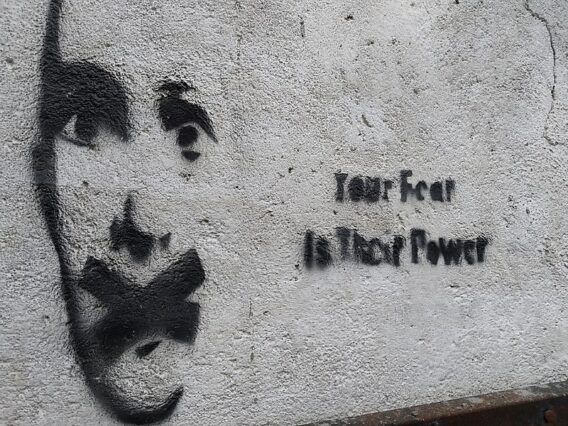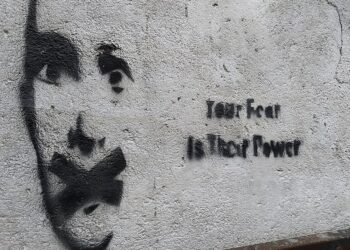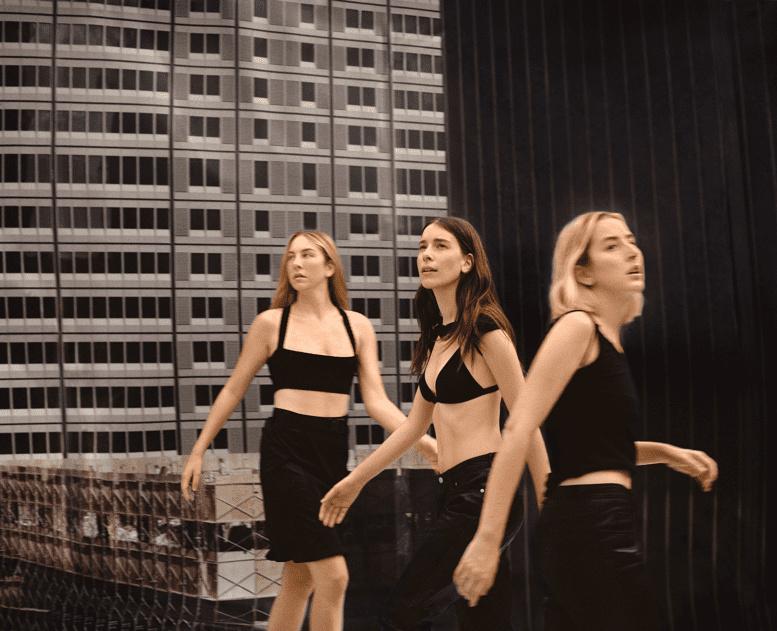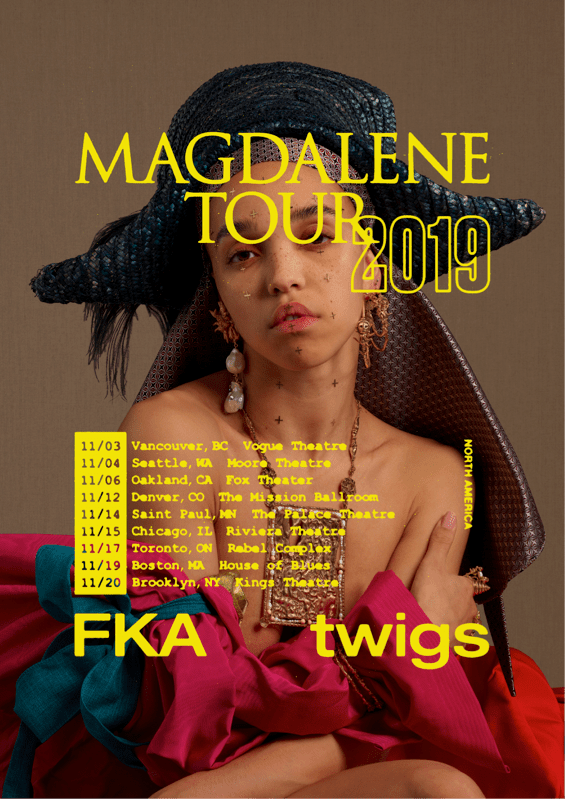By Moira Cue
Moira Cue is an award winning fine artist, singer / songwriter, and actress. Her artwork is in collections world wide, and she has appeared on stages including The Mint, The Viper Room, Heaven Gallery, and The Key Club among more.

Yesterday, after months in isolation, I drove to downtown LA for the first time. It was not the same place I lived for nine years. The first sign was a military Humvee full of national guardsmen parked on the side of the 110 freeway, something I had never seen before. I drove to a parking lot, hoping to charge my electrical vehicle and validate at Target. There was a big sign in front, saying Target was closed until further notice. I remember Target when it was Macy’s and I remember the B.R. period; Before Ralph’s (much less Whole Foods). When downtown was a ghost town after five pm, before most of the luxury lofts sprang up. Before it was cool to live there.
Maybe there is nothing whiter than quoting REM. But “Everybody hurts, sometimes.” And lately, it seems to me, that “sometimes” happens to be now for a whole lot more people than what we are used to in America. The “shining city on a hill” has given way to “American carnage.”
Speaking of 1992, it was not just the year of REM. It was the year the Rodney King beating was caught on video tape, followed by riots in Los Angeles County that left 63 dead and more than 2000 people injured. After receiving a more than three-million-dollar civil judgment against the LAPD, Rodney King died in 2012, at the age of 47, in an accidental drowning in his swimming pool, fueled by a combination of drugs and alcohol in his system.
He is most widely known for saying, “Can’t we just get along?” but what he actually said was slightly more verbose: “People, I just want to say, you know, can we all get along? Can we get along?”
It has been eighteen years since the Rodney King beating, eight years after King’s death (the same year George Zimmerman murdered Treyvon Martin), and five years after the unrest in Baltimore following Freddie Gray’s death in police custody. And now the death of George Floyd, which we all know about, seems to have been a spark in the tinderbox. It is not just Minneapolis, Atlanta, New York, and Santa Monica on fire. For me, it feels like my brain is burning.
” … Can we get along?”
We are in the middle of a pandemic, many more millions of people are unemployed than have been since the Great Depression, and racial inequality is suddenly front and center in the news in a dramatic way. So why not, I thought, see for myself what I have only seen in the papers?
I drove down 7th, seeing exponentially more boarded up stores than had been present prior to the area’s revitalization. I started driving circles around blocks, surveying the collateral damage. Spray paint. Smashed windows. Dozens of clusters of men in camo with automatic rifles, like some occupied third world country.
In the middle of Grand, not the curb, a group of affluent African-Americans sat inside a parked Mercedes that looked like it cost at least six figures. They were completely decked out in sporty designer everything, notably the richest-looking people I saw all day. Because the normal lunch work crowd of well-heeled corporate types was missing. They had not come back from the pandemic; they have been laid off or are working from home. And loft-dwelling women with young children, who might normally be running errands during the day, were nowhere to be seen.
The homeless, the agitated, the police and military, a few young, intrepid trendy types, and the working poor made up the majority of those walking around on foot. Driving around a corner, I saw a volunteer crew with gloves, rags, and cleaning supplies, working to repair the damage that had been done after several nights of looting and rioting. I decided it would make me happy to join in and continued to look for a place to park nearby. I wound up near 7th and Main, an edgier side of the city. A barefoot man in jeans and a T-shirt lounged, sitting on the dirty sidewalk outside a fried chicken shack, arguing to the air about the many wrongs he had endured. Some of the Mexican restaurants with juice bars and pizza places were open, some knock-off sneakers were being sold, and many stores simply had boarded windows.
I had to walk a few blocks back to the work crew, passing a group of LAPD without protective face masks on the corner. I greeted them with a smile, asked how they were doing, and thanked them for their service. They seemed genuinely happy for my appreciation. I also passed a young, rocker type young man with a cell phone who was taping the National Guard and taunting them. They ignored him.
By the time I got to the volunteers, half had stopped working and half were removing graffiti from a Komatsu crawler crane. I asked if I could lend a hand and was immediately greeted with a friendly welcome chorus. (The group was organized by LA Works.) Several women introduced themselves and then I decided to ask questions. A young lady named Amy answered most of them. Amy, though white, was a dedicated Black Lives Matter activist. Not only had she been out protesting night after night, but she and other protesters had been working since 7:00 in the morning to clean up after people she described as “anarchists” had used the protests as an opportunity to create mayhem. “That’s not what Black Lives Matter is about,” she said.
Amy was wearing a face mask, but not every organizer was. When I caught up with a young man named Reeyan, who declined to be interviewed on camera, he was walking with a crowd of just less than a dozen people shoulder-to-shoulder, with his surgical mask under his chin. “Do you mind if I ask you, do you have any health concerns? About spreading COVID?” Reeyan stated that he had a background in emergency management, but his primary health concern was whether the homeless would get access to medical care, not COVID-19. When pressed, he concluded that the increased availability of coronavirus testing made getting sick a non-issue for him personally. (In fact, despite the gradual reopening of LA County, new coronavirus cases have continued to climb upward since March, and as of June 4, 2020, there have been about 2500 deaths-more than half of just under 4500 deaths statewide. The New York Times estimates that at least 57,000 people have had the virus in LA County.) When my conversation with Reeyan was interrupted to let us know we were going back to base camp rather than another cleaning site, I turned in my unused supplies and started walking the other direction, hoping to get to talk to a few more Los Angelenos about the strange times we are living though.
A group of four national guardsmen, all weighed down in heavy tactical gear, looked like they could use a little friendly conversation. But when I introduced myself as a blogger, the biggest and most intimidating of them, wearing reflective glasses, stepped forward in a defensive stance, and they whispered among themselves only to offer to refer me to the office in charge of PR. “Oh, well,” I said, “How about I just ask you one human being to another, how are you doing? What is it like to be down here? Off the record.” At that point, even the tall muscular guy who was a little older and more seasoned than the others smiled and relaxed. The one with the baby face, who had been most eager to talk, opened up and the others chimed in with their comments and impressions. Since it was off the record, I do not want to break their trust or get anybody in trouble. But as I fell asleep later that night listening to a YouTube video on “sense-making,” I reflected on Daniel Schmachtenberger’s distinction between truth and truthfulness. He talked about our social media and cultural information siloes and increasing ability to filter out any information that detracts from what we already believe.
In other words, between Amy and the LA Works group of volunteers, and the young men on active duty called in from other parts of California to keep the peace, there was no difference in truthfulness: each came from a desire to serve, and both expressed their beliefs about why they were there with complete sincerity. I could describe both groups as idealistic, values-driven, and concerned about being misperceived, misportrayed (even in a small independent blog) or misunderstood.
All four active duty service members were without any type of face mask and none made any effort to keep back. So, when I saw another guardsman with an army-issued green cloth face covering (in 90-degree heat) I stopped to ask him why he was wearing one when so many other people were not. He admitted they “weren’t supposed to express any personal opinions” as if he was feeling out whether or not I was asking anything dangerous when I asked if they had been issued protective gear like N95 masks and what the leadership was doing to protect them from COVID. He said he felt bad wearing the mask because people couldn’t see him smile and didn’t know how friendly he was with it on, and that he and his squadmate, who got out of the Humvee to join in the conversation, were “a little more careful” than some of the other guys, perhaps because his wife was a nurse. At one point he revealed that he just figured he would get it and there was nothing he could do. “People have spit in my face. I have been around so many people. I keep getting tested and I do everything I can but eventually it’s just going to happen,” he said, with a mix of resignation and anxiety. “Oh, you’ll be fine,” I reassured him. “I got sick in March. Most of us will be fine.” As we talked, he seemed to come to a resolution, “I’ll talk to somebody. I’ll tell somebody,” he said.
When you live or work downtown for any period of time you learn there are people you do not talk to. There are people with very obvious schizophrenia and people who are in the active throws of a psychotic episode. You see this every day. There were two women who were lucid enough to know that there is a great deal of race-pain and race-rage active this week but otherwise struggling to “sense make.” One warned me not to get close to her; the other waved a wooden crucifix at another group of guards, practicing some sort of impromptu exorcism while hurling epithets. They remained impassive.
Since the cause of the protests rocking our country is police brutality against African-American men, and aside from one LAPD officer everyone else I’d conversed with was from other races, I wanted to make sure to connect with other Black voices downtown who had witnessed the situation locally. Three different security guards were the friendliest faces to fit that bill. The first, Kevin, asked me how I was doing, and I said I was having some feelings, then I asked him how he was doing. Kevin, it turns out, had applied for unemployment months ago but not gotten anything yet. He was a baker, but no one was taking his pies, and the looting provided him with his first job in weeks-but he really lit up talking about Normandie’s. And asked me to follow him on Instagram. So, if you want to support a small, local, Black business, please follow Kevin at @kevin202014 (security/chef/artist). Maybe you can order some pie.
The other two guys did not look like security guards (Kevin had a uniform, these two were dressed in street clothes) but were just as friendly. I told them I used to live downtown but hadn’t been there in a while, and they hadn’t been there in a while either, until they got called to guard one of the stores that had been hit. We all felt a little shock and sadness. “There’s so much going on right now, and I just feel for … everybody,” I said. “That’s very well put,” one of the men said. “How are you feeling?” I asked. “HOT!” they said. “Yeah, I’m dripping sweat,” I admitted, walking back to the car.
When you have been socially isolated for so long, and you go out to a population dense area, all those people are so much more memorable: The Latin American immigrant woman sweeping up a glass storefront shattered to pieces the size of marbles, who I told I was so sorry she had to clean this up. The thin dark skinned man with blue eyes and dreadlocks at Whole Foods, who was talking to someone else and all I heard was the phrase “Black people … ” but the gist of it was something about accomplishing peace through consciousness, and his very presence spoke of both peace and consciousness. The rows and rows of squadrons moving in and moving out in a trail of Humvees outside the LAPD headquarters, the presence of military efficiency-for peace or law and order. The rows of tents filled with mostly men of all races, many tan white and Latino, some with tattoos, some in various states of half-nakedness, all living in dire poverty, and mostly, as Reeyan pointed out, without access to medical care except for emergency technicians who themselves are still at heightened risk. And as I drove through the gates of Chinatown, I glimpsed, in the grass, face-down, sobbing and heaving, a Black man in a white polo shirt and the throws of utter despair. I wondered if he were sick, or if I could help, but I was already on my way to the freeway and knew from experience that stopping rarely improves anything. Sometimes you can offer water or a few kind words. There is not much you can do.
Everybody hurts, sometimes. But some people hurt all the time. And while “we” think about Black people this week, and Black people tell us they think about racism every day of every week and they’re tired, really the only thing you can tell about someone by the color of their skin is the color of their skin. All you can tell by the clothes they wear (including a uniform) is what clothes they are wearing. So even if it is something small, like a smile, or asking if someone is ok, let us try do that. Let us try a little extra kindness. Please. Sometimes pain is obvious, the man sobbing in the grass; but sometimes it is not. You cannot tell. You don’t know. Just assume that everybody needs a little extra love. And be safe, and pray for peace, because your life is worth it.
(subnormal magazine states: The person interviewed in this story provided no proof that anarchists were causing chaos, which has in many cases, found to be caused by members of certain “political” groups. Not all anarchists support violence, chaos, or the destruction of property).






